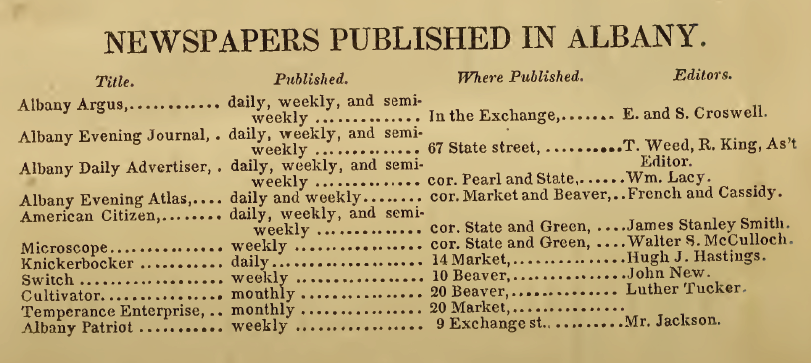
Though it was a big city, there were only 15,000 people living here (the entire county was only 33,000 people). And yet there were at that time six daily newspapers and a smattering of less frequent publications. Of those, two had exceptional longevity. The Albany Argus, first published in the Exchange Building (still standing at Broadway and State) moved to its own building in the newspaper district, just off the market, which is also still standing. Begun as a semiweekly in 1813, it went daily in 1824 and ran until 1921. For a time, publisher Crowell served as State Printer, a notable plum and an irritation to rival publisher/politician Thurlow Weed. Even after the paper ceased publication, the printing part of the business continued further up Broadway in a magnificent Marcus Reynolds building that stands today waiting for reuse. (The building is currently on Historic Albany Foundation’s Endangered Historic Resources List.)
The Albany Evening Journal is no less storied, and also left a mark on Albany architecture — the southern end of the SUNY Administration Building was originally the home of the Evening Journal, and is decorated with notable names from the history of printing. I can’t do justice to Thurlow Weed in just a few paragraphs — his role in the formation of the Republican Party and the nomination of Abraham Lincoln is worth a chapter itself. He was an old-school party boss and kingmaker who ran his newspaper as a party organ, the way it was done in those days. In addition, Samuel F.B. Morse asserted that the Evening Journal first proposed the word “telegram” to describe his new form of communication in 1852. Many articles that attained national prominence were first published in the Albany Evening Journal. The paper ran from 1830 to about 1925, when it merged with the newer Evening News and, I believe, only lasted a short time after that.


Leave a Reply